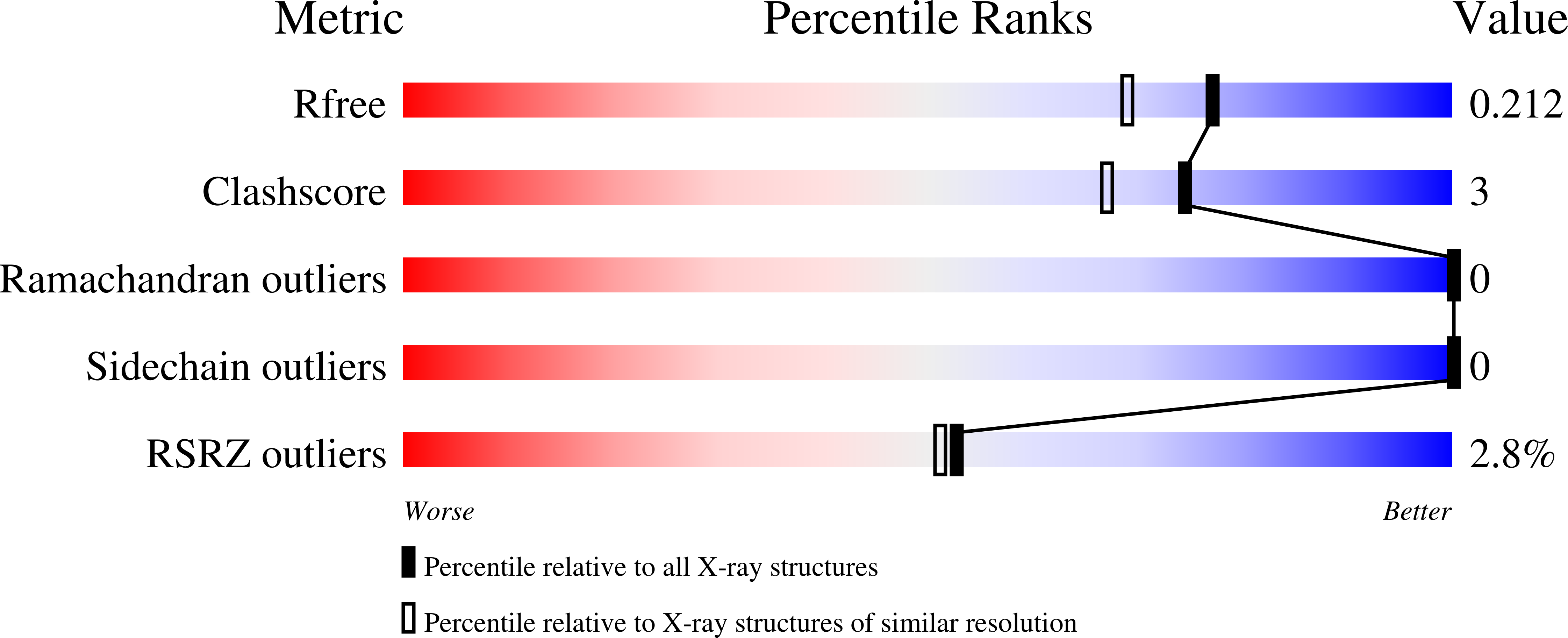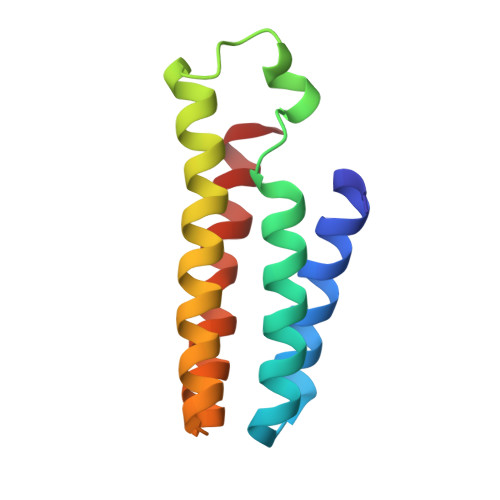Overcoming universal restrictions on metal selectivity by protein design.
Choi, T.S., Tezcan, F.A.(2022) Nature 603: 522-527
- PubMed: 35236987
- DOI: https://doi.org/10.1038/s41586-022-04469-8
- Primary Citation of Related Structures:
7LR5, 7LRA, 7LRB, 7LRR, 7LRV, 7LV1, 7MK4, 7N4F, 7N4G - PubMed Abstract:
Selective metal coordination is central to the functions of metalloproteins: 1,2 each metalloprotein must pair with its cognate metallocofactor to fulfil its biological role 3 . However, achieving metal selectivity solely through a three-dimensional protein structure is a great challenge, because there is a limited set of metal-coordinating amino acid functionalities and proteins are inherently flexible, which impedes steric selection of metals 3,4 . Metal-binding affinities of natural proteins are primarily dictated by the electronic properties of metal ions and follow the Irving-Williams series 5 (Mn 2+ ?2+ ?2+ ?2+ ?2+ ?>?Zn 2+ ) with few exceptions 6,7 . Accordingly, metalloproteins overwhelmingly bind Cu 2+ and Zn 2+ in isolation, regardless of the nature of their active sites and their cognate metal ions 1,3,8 . This led organisms to evolve complex homeostatic machinery and non-equilibrium strategies to achieve correct metal speciation 1,3,8-10 . Here we report an artificial dimeric protein, (AB) 2 , that thermodynamically overcomes the Irving-Williams restrictions in vitro and in cells, favouring the binding of lower-Irving-Williams transition metals over Cu 2+ , the most dominant ion in the Irving-Williams series. Counter to the convention in molecular design of achieving specificity through structural preorganization, (AB) 2 was deliberately designed to be flexible. This flexibility enabled (AB) 2 to adopt mutually exclusive, metal-dependent conformational states, which led to the discovery of structurally coupled coordination sites that disfavour Cu 2+ ions by enforcing an unfavourable coordination geometry. Aside from highlighting flexibility as a valuable element in protein design, our results illustrate design principles for constructing selective metal sequestration agents.
Organizational Affiliation:
Department of Chemistry and Biochemistry, University of California, San Diego, La Jolla, CA, USA.
















